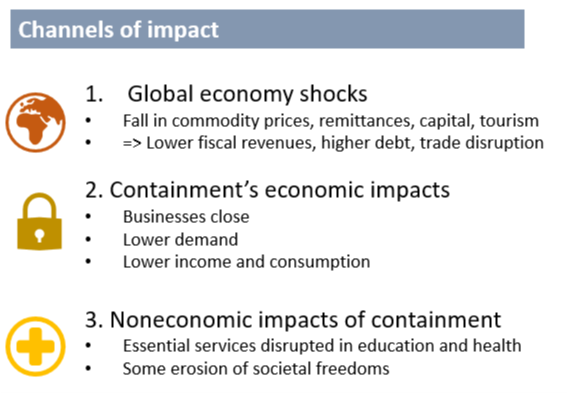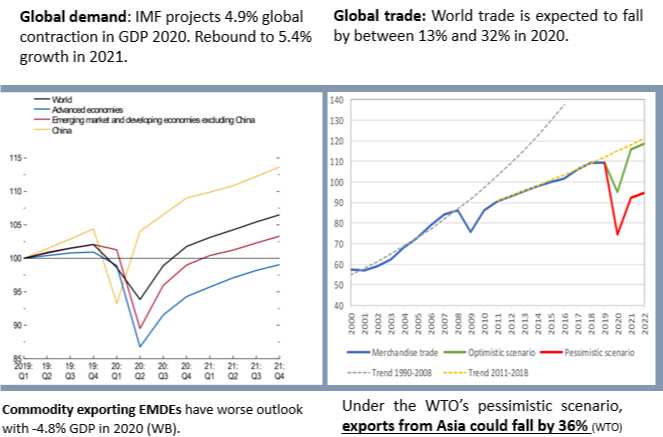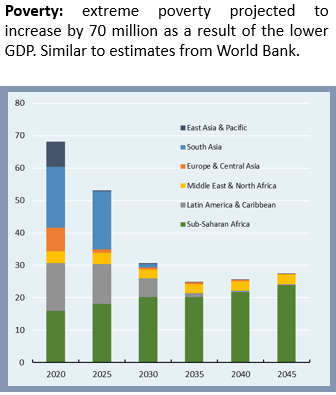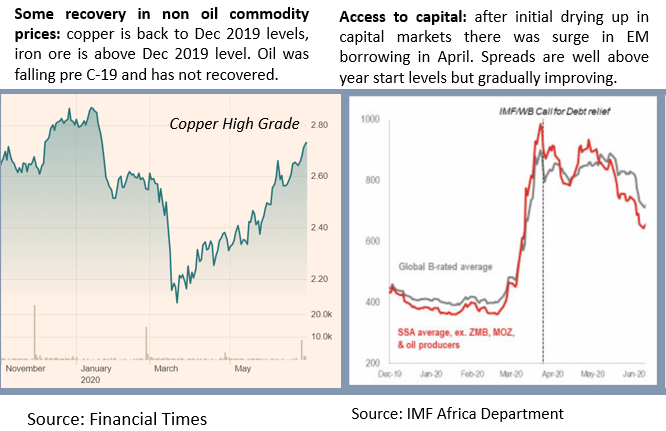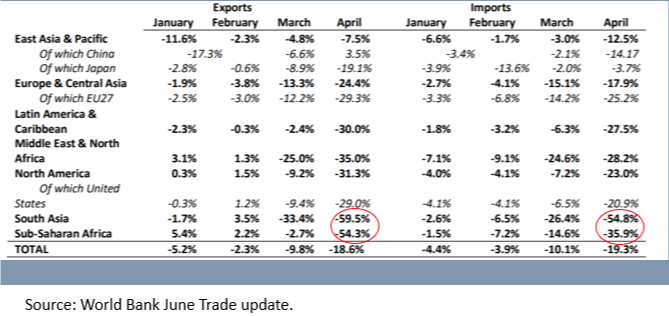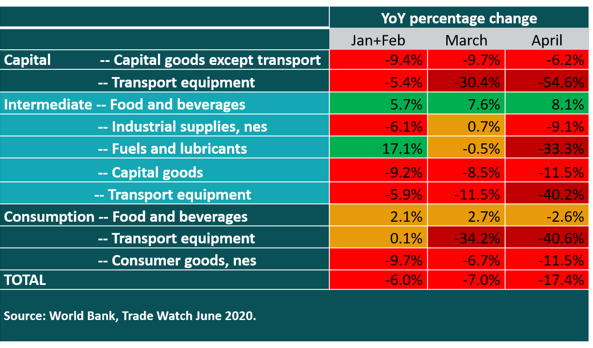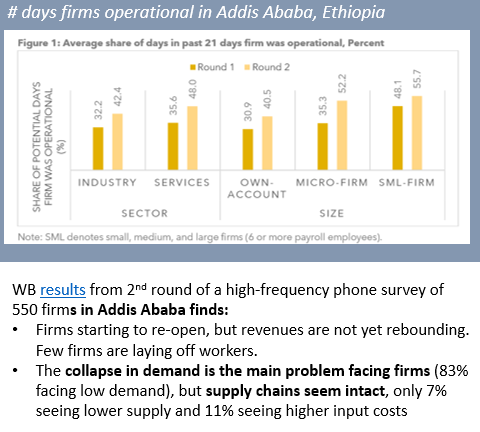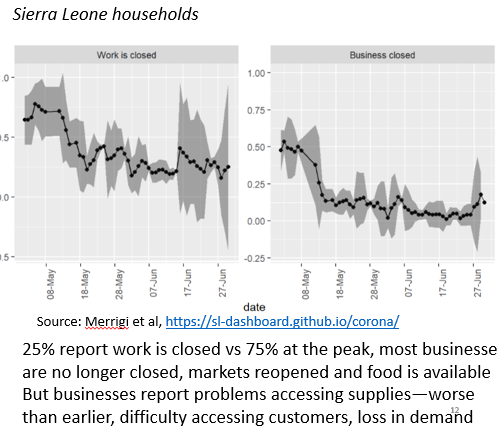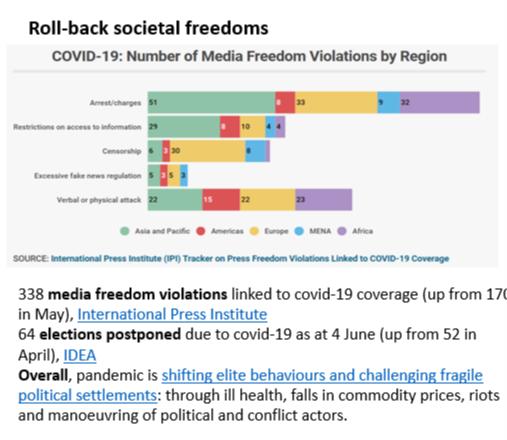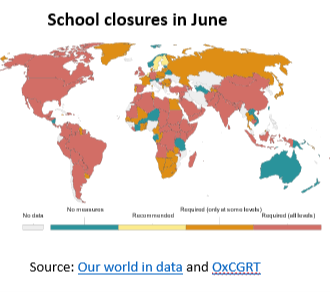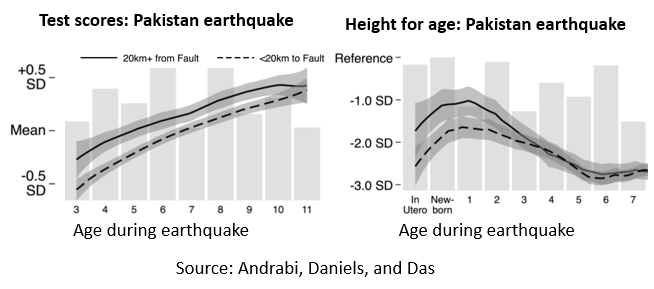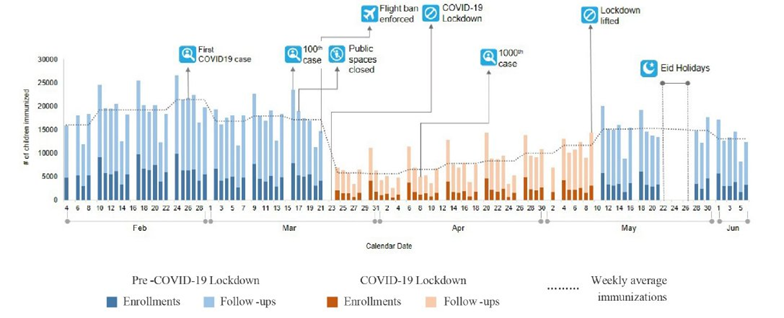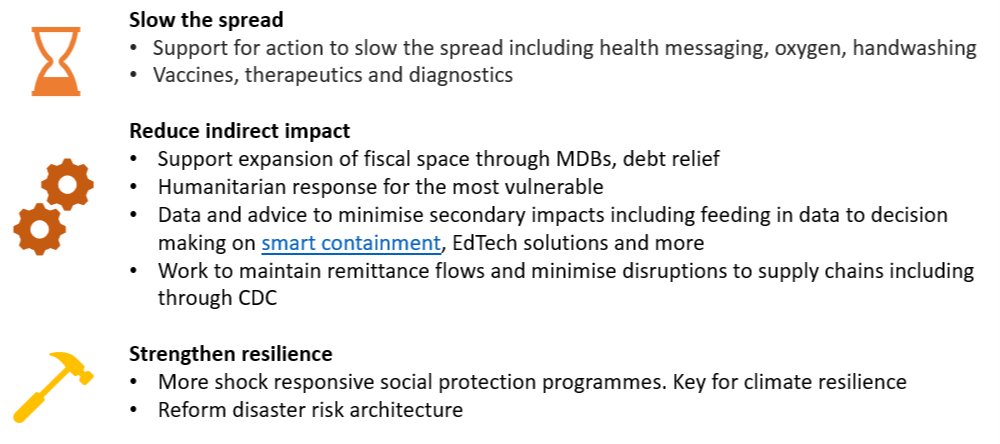In March we forecast indirect impacts of C-19 on developing countries through 3 channels:
1. global economic (eg commodity prices, capital flows);
2. containment& #39;s impact on livelihoods;
3. other secondary impacts (eg school closures).
What does the data say now? Thread.
1. global economic (eg commodity prices, capital flows);
2. containment& #39;s impact on livelihoods;
3. other secondary impacts (eg school closures).
What does the data say now? Thread.
Global demand and trade have fallen substantially. The IMF forecasts a contraction of 4.9% in GDP while WTO projects a fall in world trade of between 13 and 32% in 2020. Commodity producing emerging markets are forecast to do particularly badly.
This decline in GDP would translate into an increase in extreme poverty of 70 million if the previous relationship of GDP to poverty applied. The below estimates are from @DFID_UK internal model but are very similar to those from the @wb_research.
Since the low there has been some recovery in non-oil commodity prices (copper, a good measure industrial demand, is back to late 2019 levels). Spreads on emerging market debt have rebounded somewhat and EM are tapping debt markets again, though still a long way to go.
Exports and imports fell dramatically especially for Sub-Saharan Africa and South Asia. Shipping activity in May and June has recovered but is still 5% below previous year.
Trade data shows C-19 is essentially a demand shock not a supply shock. Trade is down for capital goods where investment is postponed. Trade is up in necessities like food. Supply chains have been surprisingly resilient. "No car failed to be built because of supply disruption"
Containment & low demand caused sharp falls in income & consumption in LICs/MICs as evidence from multiple household surveys. Formal sector workers doing better than informal workers. These data from Rahman and Matin for Bangladesh, @tedmiguel et al for Kenya, Demeke Ethiopia.
And households in Sierra Leone. Note these high frequency surveys have been critical to understanding the dynamics of the C-19 economic impacts.
New work from @riseprogramme shows how much long term damage can result from short run crises. Children near the fault line of the 2005 Pakistan earthquake had substantially lower test scores and height for age 4 years later. With likely 15% loss in lifetime earnings as result.
Indeed, secondary impacts on health are likely to exceed primary impacts of C-19 on health in LICs and MICs. Below are data on immunization rates from Karachi from @IRDGlobal
What is @DFID_UK doing to support LICs/MICs impacted by C-19? We have worked with MDBs/IFIs to help provide countries more fiscal space to respond, supported direct medical and humanitarian response, and sought to provide data to help countries tailor their response & much more.

 Read on Twitter
Read on Twitter